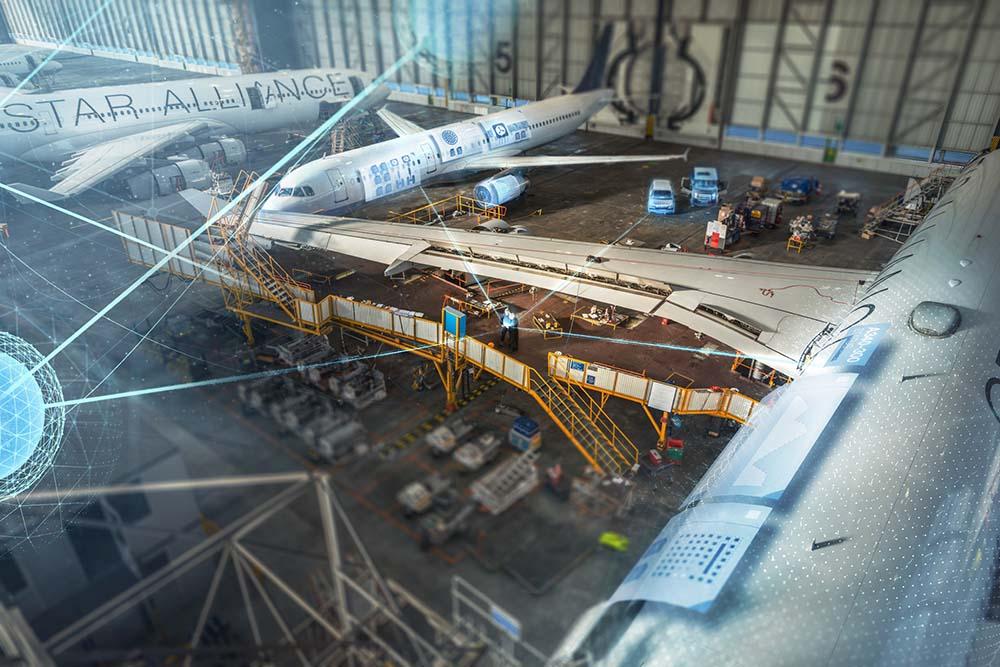
What began as a strategy to support the increasing digitalization of MRO has turned into creation of technical operations ecosystem. Lufthansa Technik (LHT) has brought Swiss-AS’s AMOS engineering and maintenance system and flydocs digital maintenance archives under one roof with Aviatar, according to Philip Mende, vice president of digital fleet services at LHT.
Mende says this integration will enable powerful immediate and future synergies, as AMOS, flydocs and Aviatar can more easily exchange data among each other and tap the massive data already stored on the platforms.
AMOS’s current 200 customers, comprised of airlines and MROs, can continue using AMOS independently of Aviatar, as will flydocs’ and Aviatar’s customers, under a modular offer of services, Mende stresses. These customers can also continue to connect with and collaborate with Aviatar’s competitors. “We will stay open and modular,” Mende says.
To facilitate that open approach, Aviatar already connects with some other maintenance and engineering (M&E) systems and with some airlines’ in-house maintenance IT systems.
So what are the immediate advantages of bringing the three solutions closer together? AMOS, Aviatar and flydocs already have application programming interfaces (API) to many other aftermarket systems, both inside and outside the ecosystem. But sometimes these APIs do not work. Now, it will be the responsibility of AMOS, Aviatar and flydocs staff to make sure APIs do work and customers enjoy a seamless experience between solutions.
Mende says more important synergies involve the different kinds of data that various technical apps contain.
AMOS, like other M&E systems, contains maintenance data, dates of last checks and aircraft configurations. “It’s like an [enterprise resource planning] system for tech ops,” Mende explains. Flydocs, like other archiving systems, contains digitalized ‘dirty fingerprint’ records from shops and line maintenance.
Aviatar itself receives full flight data and fault messages in real time. Combining these different data types could be quite advantageous. “For those customers who opt to use a seamless exchange across all these systems, we can create additional benefits,” Mende says. Among other benefits, this should make workflows easier for customers.
Finally, the ecosystem should now be able to create entirely new solutions that exploit both the data and the capabilities of AMOS, flydocs and Aviatar’s own analytical systems. Here, the benefits could be substantial.
AMOS now supports more than 7,000 aircraft, of the roughly 20,000 commercial aircraft that Mende estimates generate meaningful streams of technical data. Flydocs has digital records on over 3,000 aircraft from more than 60 airlines and lessors.
Mende says Aviatar already has “double-digit terabytes of data” from its support of about 4,000 aircraft. It can also tap the repair data from LHT component shops that count no fault founds and the specific defects found in removed components. This repair shop data is especially useful in refining predictive algorithms.
Aviatar can thus offer predictions of failures in more than a hundred use cases for different systems on different aircraft, including engine bleed air systems on the Airbus A320 family. It also offers airplane health management, fault messages, tools for spotting patterns in reliability, data from pilots’ electronic logbooks and an MRO optimizer that recommends maintenance actions for the next 2-3 days.
Mende is confident Aviatar will be able to combine its current capabilities, data and LHT technical know-how with AMOS and flydocs capabilities to create more value for customers.
Mende acknowledges that he is sometimes questioned by prospective customers on the security and confidentiality of the data they might store on Aviatar. He responds that Aviatar meets ISO standards for protection against data breaches. Mende also notes that all customer data stored by Aviatar remains owned by the customer, so customers control exactly who, if anybody, among Aviatar staff may have access to this data.
LHT further bolstered its digital offering by confirming the integration of software developer Lufthansa Industry Solutions (LHIND) into its MRO company.
The agreement was confirmed on Jan. 24 and sees LHIND become a fully owned subsidiary of LHT, a process that was finalized in early January. However, LHIND will remain an independent entity with its own management and market presence and continue to focus on aviation as well as industries outside of aviation.
In the context of LHT, LHIND experts will focus on the company's digitalization of core MRO processes, as well as turnaround time reductions and cost savings. LHT says taking on around 2,300 IT specialists from LHIND will further boost its Digital TechOps Ecosystem and enable more services.
"With LHIND's highly specialized and dedicated colleagues at our side, we are getting ever closer to our strategic goal of leading the digital transformation of the MRO industry," says William Willms, CFO of Lufthansa Technik. "On the one hand, no other IT service provider understands us as well as LHIND, and on the other hand, we benefit enormously from the knowledge transfer that LHIND can provide, as they are active in many different industries."






